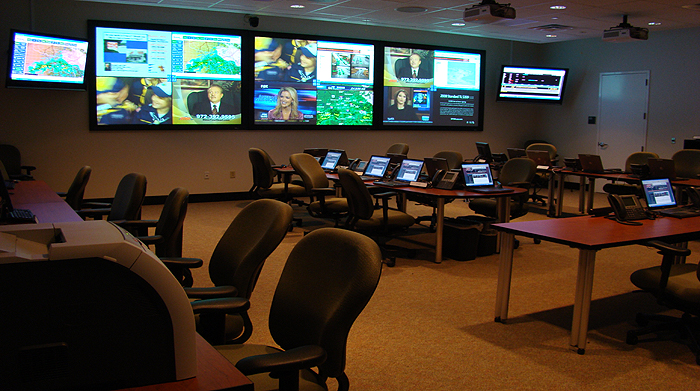Utility Emergency Operations Center (EOC) Best Practices

It seems that nearly every generation has its signature emergency operations center (EOC) movie. You may remember Peter Sellers in “Doctor Strangelove – Or How I Learned to Stop Worrying and Love the Bomb.h2 If you’re a bit younger, you might remember a very young Matthew Broderick in 1983’s “WarGames.h2 Younger yet? How about Ed Harris to the rescue in “Apollo 13?h2
And for good reason. EOC’s are the ultimate nerve center. Lots of futuristic technology whirring and flashing, with dramatic situations, heroic (or antiheroic) incident commanders, stressed out people and great visuals. All you really have to do is change the situation and the movie practically writes itself.
Of course, a utility-based EOC movie would probably lull most audiences to sleep. Nothing exciting ever happens there, right? As Leslie Nielsen’s Frank Drebin once said when an exploding tanker truck rammed into a fireworks factory: “Nothing to see here, everything’s under control.h2
It may not be a prime location for Tom Cruise’s latest blockbuster, but during emergencies large or small, the utility EOC is where it all comes together.
The emergency operations center is the central command and control operation that helps orchestrate response by collecting and analyzing data and disseminating strategic level emergency duties (i.e., decisions that protect life and property, maintain continuity of the organization, etc.). But for all the whiz-bang technology in use, each center is only as good as the people who manage it.
In general, emergency operations center management is responsible for:
- EOC activation, notification, staffing, and deactivation.
- Management, direction, control, and coordination of response and recovery activities.
- Coordination of efforts among regulatory / governmental entities and EOCs at local, regional, state, and federal levels.
- Maintenance of the information and communication necessary for coordinating response and recovery activities, and keeping stakeholders and the general public informed.
EOCs enhance coordination and collaboration when they are logically organized into basic management functions, are objective-based, facilitate unified command, and maintain manageable span of control.
EOC Best Practices
Utility EOCs have evolved over time and each configuration depends upon the specific needs of the organization. This evolution has produced some best practices:
- Develop a robust command, control and monitoring function that is easy and efficient to use, collects information rapidly, coordinates activities and resources, tracks multiple incidents and resources, communicates activities across the enterprise, and provides reports and documentation.
- Base your EOC structure on the Incident Command System (ICS) to facilitate a standardized operational structure and common terminology.
- Document clear standard operating procedures for activation, operation, and deactivation of the EOC.
- Identify and equip a backup location, to ensure continuity of operations even in the worst case scenario.
- Treat all information as digital data – maximize your use of technology because pencil and paper don’t cut it anymore.
- Use status boards and reports, color-coded to ease the analysis of information.
- Clearly document all personnel assignments.
- Train all EOC personnel in emergency response plans, policies, procedures, and protocols. Make training part of a regular curriculum that includes both exercises and drills.
- Provide EOC personnel the proper authority to carry out their responsibilities, endorsed from above and made clear through proper communication channels.
- Equip the EOC with state-of-the-art, redundant communications systems including landline phones, cell phones, satellite phones, and even amateur radio groups.
- Locate the EOC away from high hazard areas and in a survivable building, separated from highways, railroads, pipelines, flood plains, and hazardous material sites.
- Design strong, layered levels of security, including onsite security cameras, card readers, fencing, gates, security checkpoints, blast film over windows, road barriers, and even biometric devices.
- Provide a facility that is roomy and uncluttered. Many employees will be there – often for days on-end – so the more physical space, the better.
- Configure seating arrangements to maximize communication and eye contact between decision-makers.
Additional considerations include provisions for back-up power, potable water, HVAC, computers, break out rooms, ergonomics, air quality, video with a large screen display, food service, and sleeping quarters.
Bottom Line
Designing and managing an effective EOC is key to successful emergency restoration, but it won’t get you into the movies. And that’s a good thing. Ever seen “Plan 9 From Outer Space?h2


This is so concise; I love it. Appreciate the simplicity here!